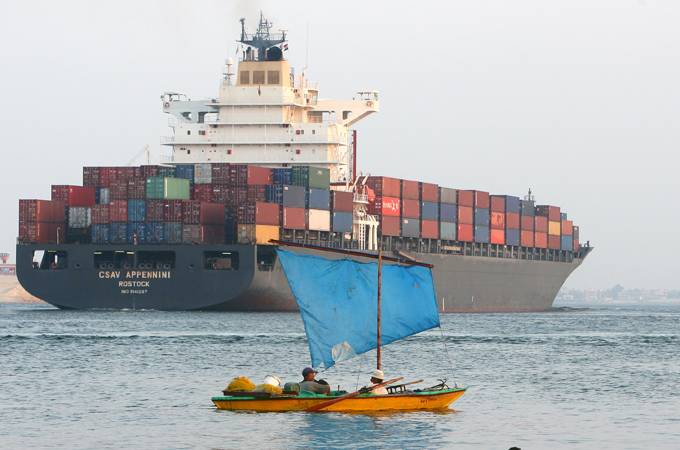Cable shows US global security list
WikiLeaks file reveals that the US equates threats to many overseas facilities as a threat to its national security.

 |
| The security of import and export terminals at the Suez Canal in Egypt are considered crucial to US interests [EPA] |
A new diplomatic cable released by the WikiLeaks website shows the US had listed a extensive number of facilities around the world that it considered vital for its national security.
The February 2009 cable released on Monday is an “action request”, which states that under the auspices of the Department of Homeland Security’s National Infrastructure Protection Plan (NIPP), US missions overseas are required to file a report by the following month, listing why posts – overseas infrastucture facilities – might be critical to US interests.
The sheer breadth of the facilities the US considers pertinent to its national security is extraordinary, and the cable does not detail why or how potential attacks on many of them constitute a threat against US national security.
It is also unclear how or if their protection would fall under the purview of the US Department of Homeland Security.
‘Irreplaceable’ facilities
The value of some of the listed potential targets, however, are explained. For example, a Canadian hydroelectric plant is described as a “critical irreplaceable source of power to portions of Northeast US”, while a Siemens factory in Germany does “essentially irreplaceable production of key chemicals”.
Also listed are European manufacturers of vaccines for smallpox and rabies, an Italian maker of treatment for snake-bite venom, and a German company making treatment for plutonium poisoning.
The leaked cable itself lists a comprehensive, geographically expansive number of key facilities and infrastructure in dozens of countries as “vital” to US national security, and therefore “under the protection of a single programme”.
Washington said on Monday that WikiLeaks’s decision to publish the document provided groups like al-Qaeda with a “targeting list” for possible attacks.
“It is irresponsible. Information is classified for good reason, most especially information involving critical infrastructure that supports our economy and those of other countries,” PJ Crowley, the US state department spokesman, said.
“Julian Assange [the founder of WikiLeaks] has released what amounts to a targeting list that will be of interest to groups like al-Qaeda.”
Will Geddes, a security specialist with International Corporate Protection in London, told Al Jazeera that the details of the leaked cable could “without a question” pose a threat to US security.
“When you consider how most terrorist groups operate in a very conventional sense,the first part of any operation will be the selection of a target.
“When we look at some of the sites listed on this document these things make it very easy to then say these are the sorts of targets we should be aiming for and then they can move very quickly to a reconnaisance phase.”
Potential targets
The cable categorises the potential targets in several sectors as such:
The NIPP identifies 18 CI/KR sectors: agriculture and food; defense industrial base; energy; healthcare and public health; national monuments and icons; banking and finance; drinking water and water treatment systems; chemical; commercial facilities; dams; emergency services; commercial nuclear reactors, materials, and waste; information technology; communications; postal and shipping; transportation and systems; government facilities; and critical manufacturing.
While the release of the US diplomatic cables has put Hillary Clinton, the US secretary of state, in a difficult position, this leak is also the cause of consternation, as it exposes some critical, classified facilities, such as undersea cables, satellite systems.
A spokesman for David Cameron, the British prime minister, on Monday condemned the release of the secret list of key global infrastructure, saying such leaks were “damaging to national security”.
The cable indicates that the list is built upon a 2008 survey of resources or facilities, and requires that each post “reassess and update information about the infrastructure and resources in each country whose loss could immediately affect the public health, economic security, and/or national and homeland security in the United States.”